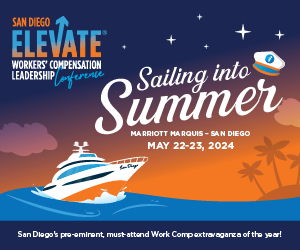Industry Insights
March 13, 2024
Snyder: Applying the Scientific Method to Case Resolution
- National
- - 0 shares
You undoubtedly studied the scientific method in school. You may have even applied it to sophisticated experimentation. Think about how to use that approach for case evaluation and resolution now.

Teddy Snyder
Going through the steps
The scientific method can be defined in as few as four steps or as many as 10, but let’s think about a five-step process.
First, identify the problem. Use what you know so far to start your action plan. For each possible issue, determine what information you need to resolve the question. That could be gathering records, talking to occurrence and expert witnesses, and researching alternative theories.
Second, gather data, i.e., discovery. The trick here is to be open to all information. Don’t ignore adverse information, a psychological phenomenon called confirmation bias. Your definition of the issues is likely to change as you collect more information.
Third, develop a hypothesis. This is your theory of the case. An amount of money or other relief is owed/not owed for the reasons shown by the data the parties have gathered.
Fourth, test your hypothesis. Here is where the art of case resolution and science diverge. Sometimes you can test your hypothesis with a motion to dismiss or for summary judgment. Those are rarely successful. This isn’t like subjecting a cell sample to different catalysts and seeing how it reacts.
The safest place to test your legal hypothesis is in mediation. Come prepared to experiment by seeing the result of your disclosures and negotiation. Besides interacting with your opponent in a structured, confidential process, you will get the benefit of the mediator’s guidance. Of course, unlike a scientific experiment, the best result — settlement — will probably fall somewhere between each side’s result hypothesis.
Without a settlement, parties must test their hypothesis by submitting the case to a judge or jury, and we all know how risky that can be.
Fifth, does the new data agree? What did you learn at the mediation? With this new information, you can revise your hypothesis and litigation strategy and test again. After a motion or trial, somebody won and somebody lost— at least theoretically. But a comparison of the net recovery or liability in comparison to the last offer and demand might show that neither side came out ahead. Depending on the posture of the case, it might not be too late to try to settle.
Use what you learned along this inquiry path to facilitate resolution in the next case.
Attorney Teddy Snyder mediates workers' compensation cases throughout California. She can be contacted through snydermediations.com.
Advertisements
Columns
- Langham: Uniformity in Regulations 04/25/24
- Kamin: Expanding the Good-Faith Personnel Action Defense 04/24/24
- Moore: Reciprocity Adds Authority 04/23/24
- Montgomery: Sedgwick Tries PPO Discount for Med-Legal (Again) 04/19/24
- Kamin: More Policy Exclusions Would Reduce Losses 04/18/24
- Phillips: It's All Settled 04/17/24
- Snyder: Public Benefit Rules Have Changed, but It Might Not Make a Difference 04/12/24
- Headrick: Clearing Up a Common Misconception 04/11/24
- Snyder: Litigation Guidelines Should Define Four Settlement Triggers 04/10/24
- Kirsch: Depositions of Comp Carrier Employees After Intervening in Third-Party Actions 04/09/24
- Wilson and Bennett: Could AI Have Prevented the Opioid Crisis in Workers' Comp? 04/08/24
- Moore: Pandemic Effect Over in March 2027. Really? 04/05/24
- Geaney: A Brief History of Our State's Workers' Compensation Act 04/04/24
- Kamin and Larres: Significant Panel Decision Clarifies Recon Confusion 04/03/24
- Gelman: Exposed to 'Forever Chemicals' 04/02/24
- Montgomery: Cyberattack Delays Payment of San Francisco Bills 04/01/24
- Young: Indoor Heat Regs in Turmoil 03/29/24
- Langham: Shootings and Compensability 03/27/24
- Geaney: Third-Party Liens Not Always Due Right Away 03/26/24
- Larres: State Supreme Court Denies Review of Our Appellate Win 03/25/24
Now Trending
- Workers' Compensation News
-
Calif. DWC
Launches Portal for QME…
Posted on Apr 24, 2024Dr. Ron Perelman says: “The problem is that most QMEs are older docs. Many are semiretired.…”Kimberley J Pryor says: “I had planned to post a well constructed comment, but I stopped…”
-
Calif. Worker Gets
Benefits for Crash Despite Leaving
Job Site Without Employer's…
Posted on Apr 25, 2024
-
Calif. Committee
Passes Bill to Eliminate Contractor
Comp Coverage…
Posted on Apr 26, 2024Gary Nelson says: “I think Dodd was right in 2022. …”
-
Calif. DWC Updates
Time-of-Hire…
Posted on Apr 23, 2024
-
Calif. Committee
Passes Bill to Expand 4850…
Posted on Apr 22, 2024
-
Calif.
Appropriations Committee Places TD
Bills on Suspense…
Posted on Apr 24, 2024
-
Calif. Newsom Says
Indoor Heat Safety Rules Too
Expensive for…
Posted on Apr 25, 2024
-
Neb. Divided
Supreme Court Reinstates
Occupational Disease Claim for…
Posted on Apr 23, 2024
-
Ore. Worker Can
Request Examination if Carrier
Supports Claim Denial With IME…
Posted on Apr 22, 2024
-
Ark. Worker Not
Entitled to Additional Benefits
After Date of…
Posted on Apr 22, 2024
Jobs
Upcoming Events
May 5-8, 2024
Risk World
Amplify Your Impact There’s no limit to what you can achieve when you join the global risk managem …
May 13-15, 2024
NCCI's Annual Insights Symposi
Join us May 13–15, 2024, for NCCI's Annual Insights Symposium (AIS) 2024, the industry’s premier e …
May 13-14, 2024
CSIA Announces the 2024 Annual
The Board of Managers is excited to announce that the CSIA 2024 Annual Meeting and Educational Con …
Social Media Links
c/o Business Insurance Holdings, Inc.
Greenwich, CT 06836





No Comments
Log in to post a comment